Norge - Norway
NORGE - NORWAY

Flying to Norway

Finally we were on our way and flew out of Iceland on an Icelandair flight to Bergen.

Some of the old wooden houses near the harbour dating back to the days of the Hanseatic League

Many of the houses are built on the hillsides rising up from the fjords. One of the books Lucy read said that Bergen is known for its ‘fickle weather’. Not quite sure what they mean by that, but while I was there it was mainly grey and damp, and there was an umbrella in my hotel room. Although the sun did break through for a while in the evenings.

Planning our stay in Bergen
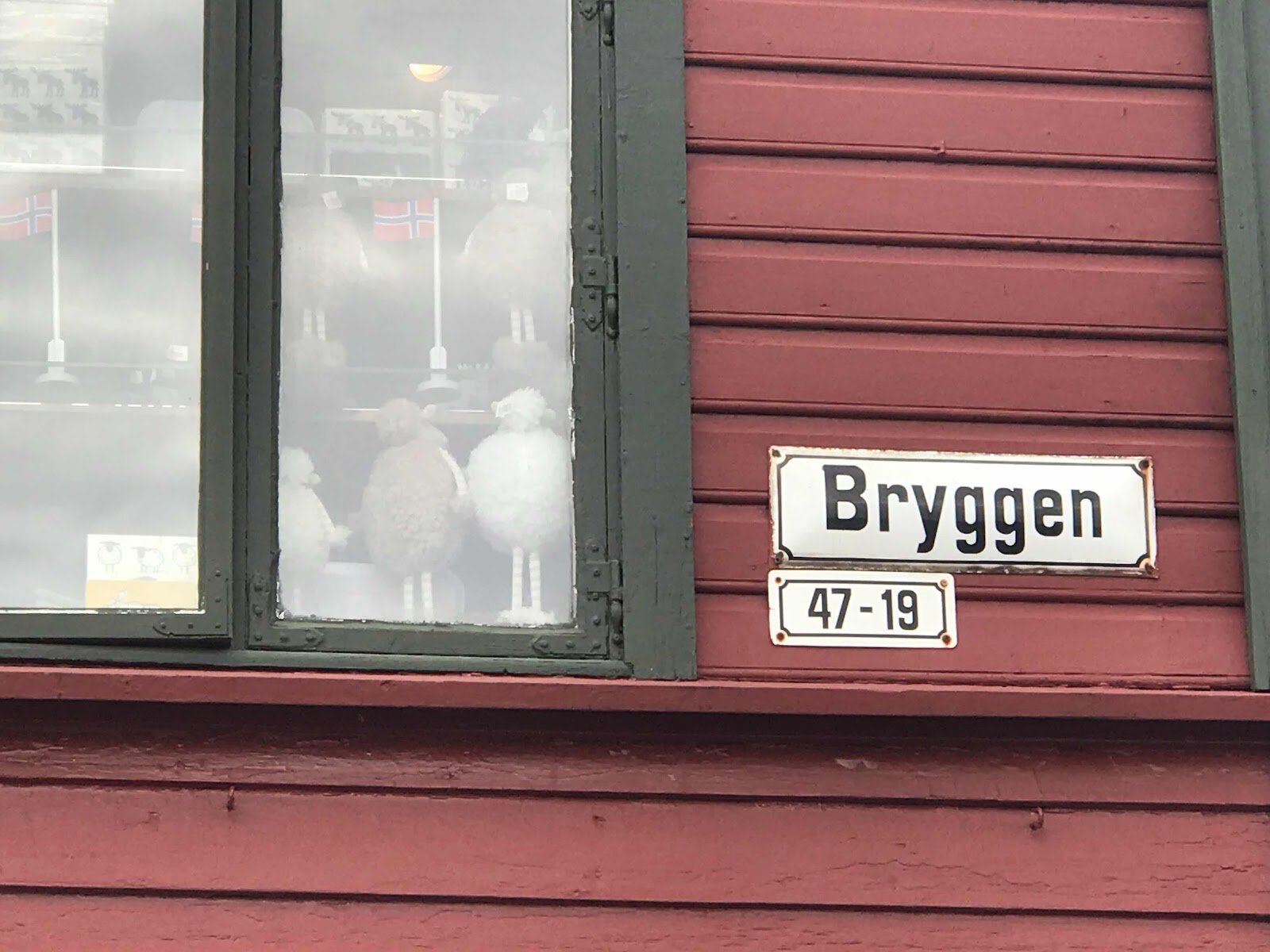
Bryggen, with its colourful wooden houses is now a popular tourist area with gift shops and cafes.


Then I went to look at the Edvard Munch exhibition at Kode 3, one of the four Kode art galleries in Bergen. The gallery owns one of the best Munch collections in the world and is well worth a visit because it exhibits paintings from all stages of his work.
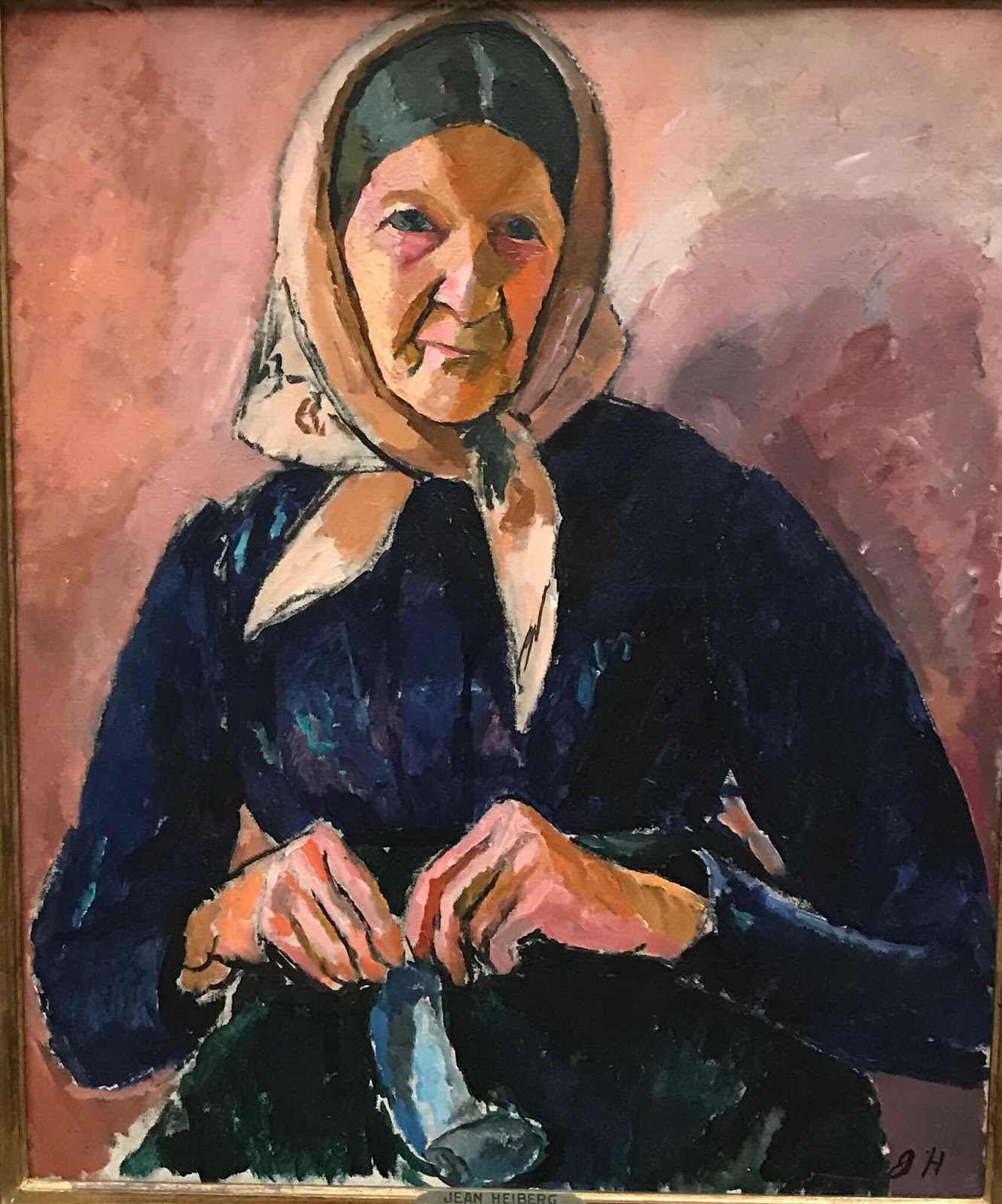

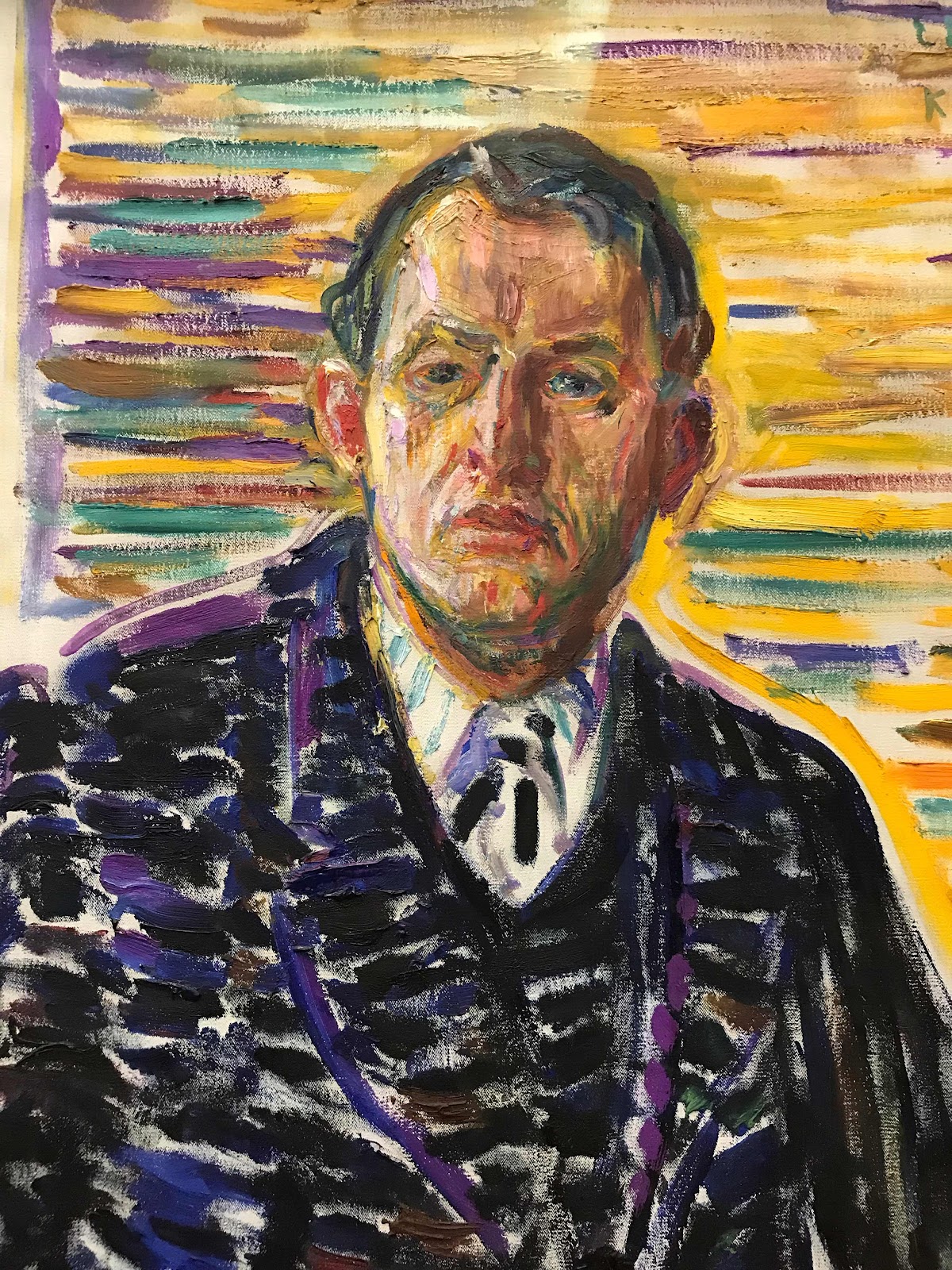

Some of Munch’s paintings in Kode 3, although I had to take a photo of the poster of ‘The Scream’ as it is currently on display at the Munch Exhibition at the National Gallery in London. It is usually displayed at the Munch Museum, Oslo



Two patients lived in a small room, often for several decades.

Armauer Hansen devoted his life to the study of leprosy and helped to advance the understanding and treatment of the disease.
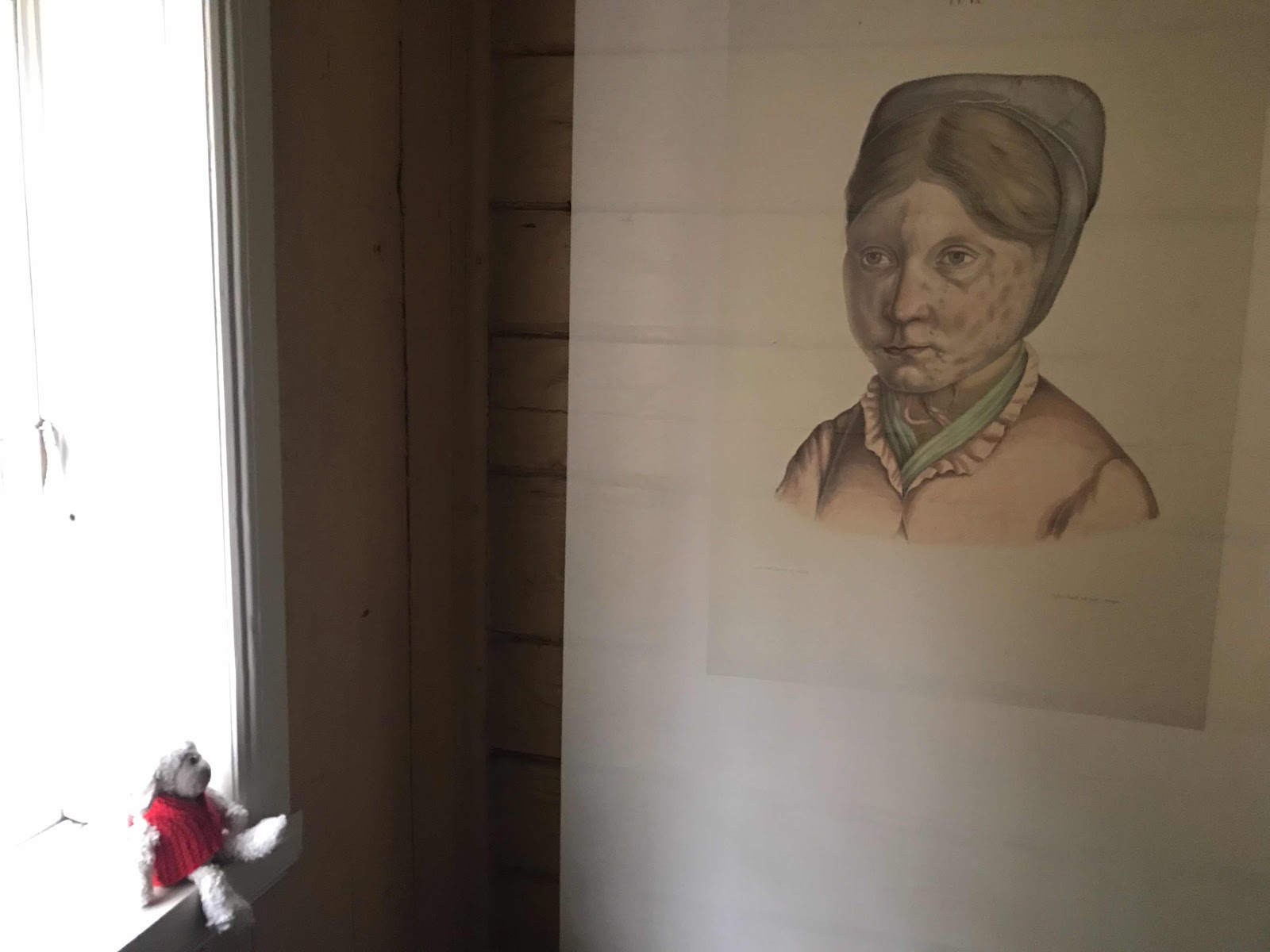
Lucy sat in one of the rooms and thought about the life of this woman who was admitted at the age of 10.

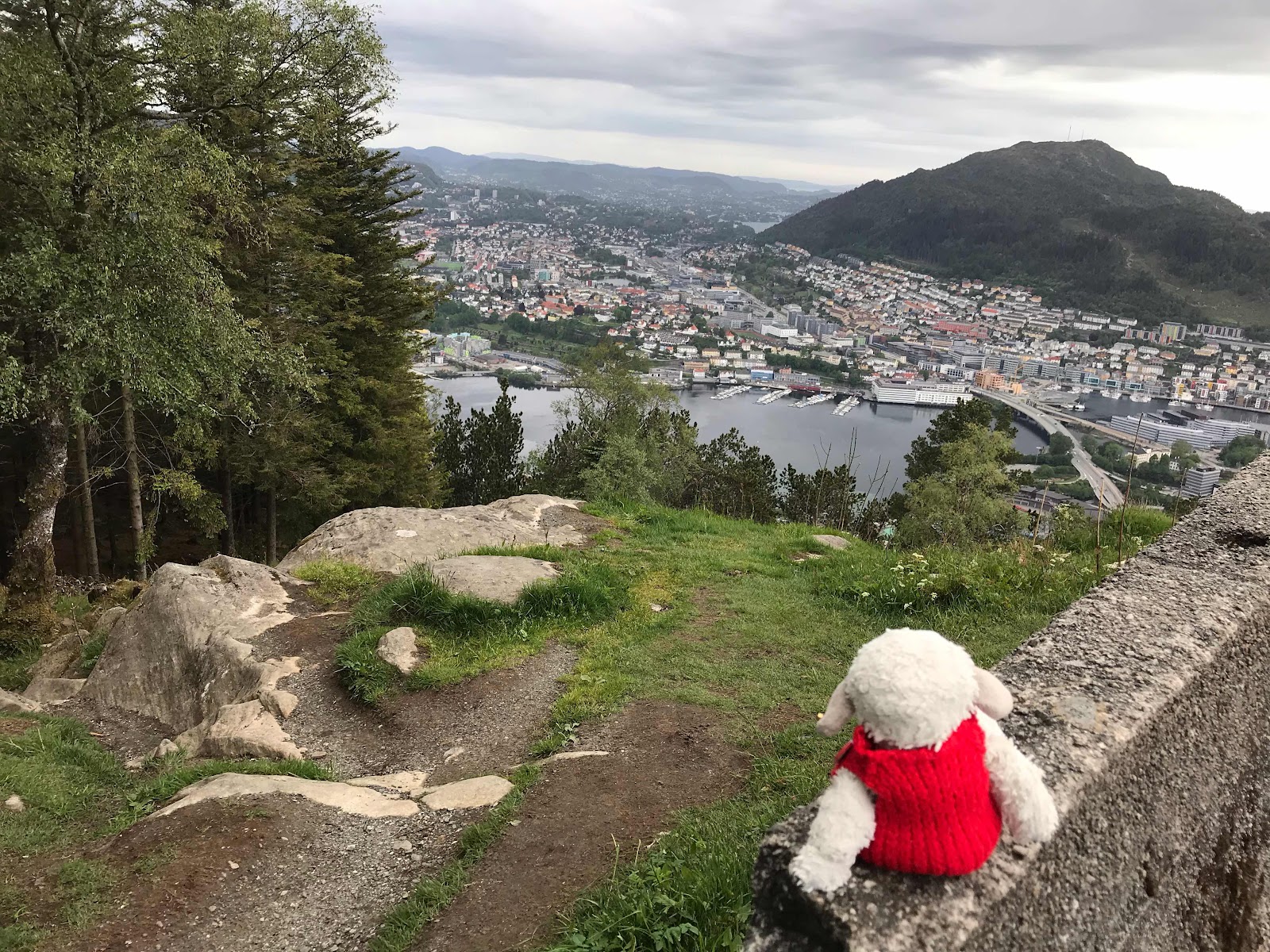

Lucy also met a troll and some mountain goats while she was there.
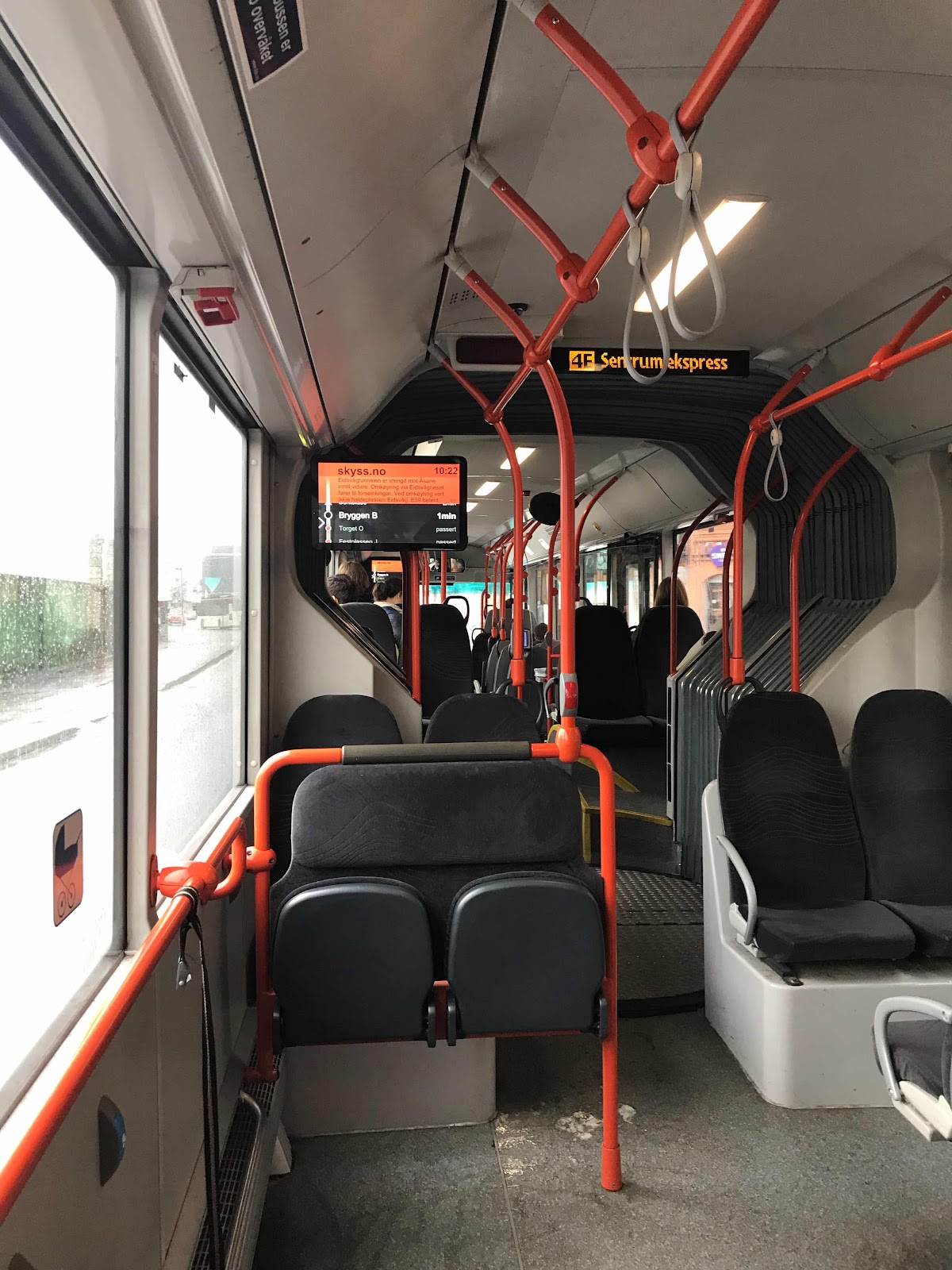
On one of the buses going to Salhus
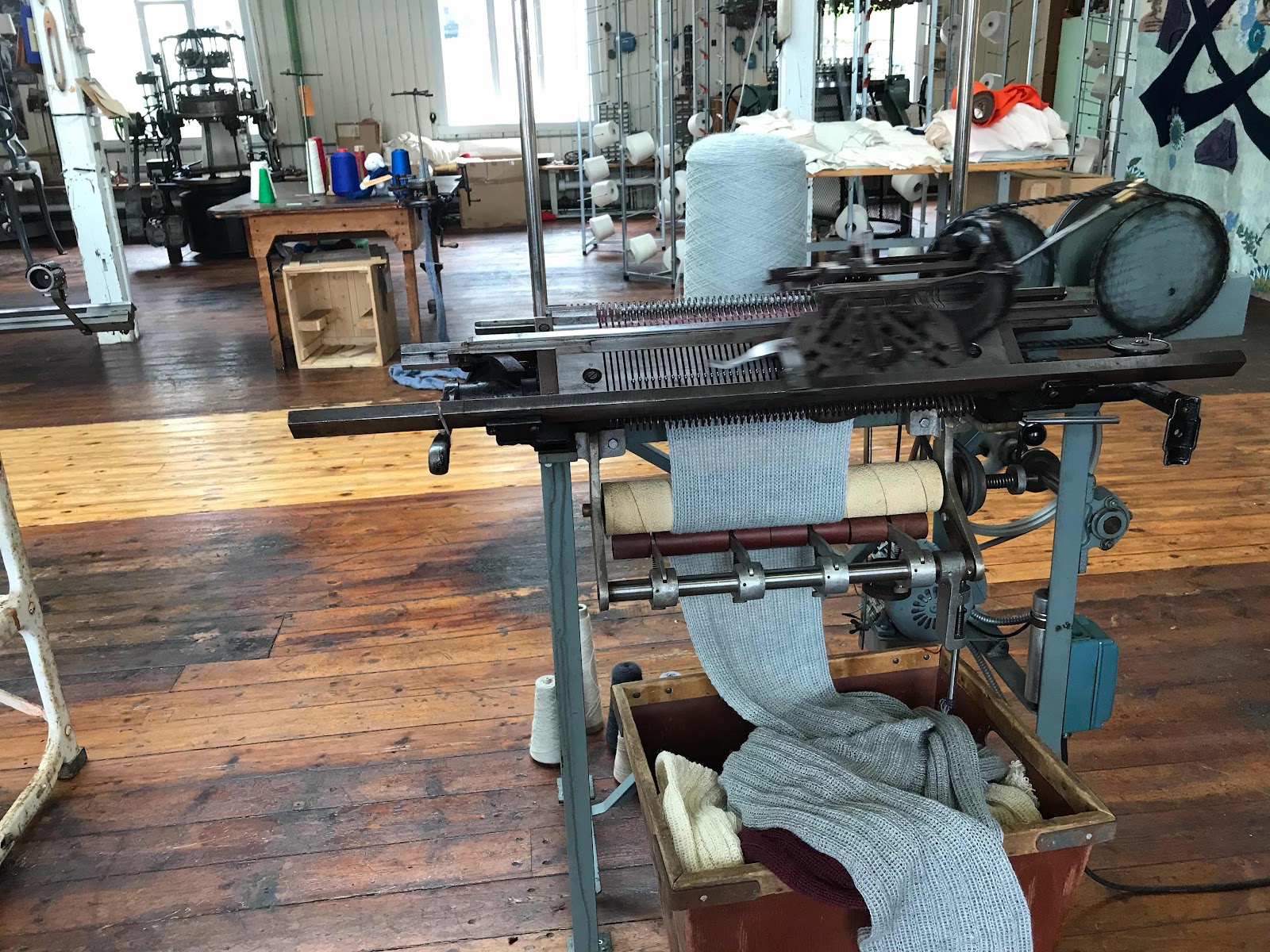


She had help choosing the sheep’s wool she was going to use to make it.
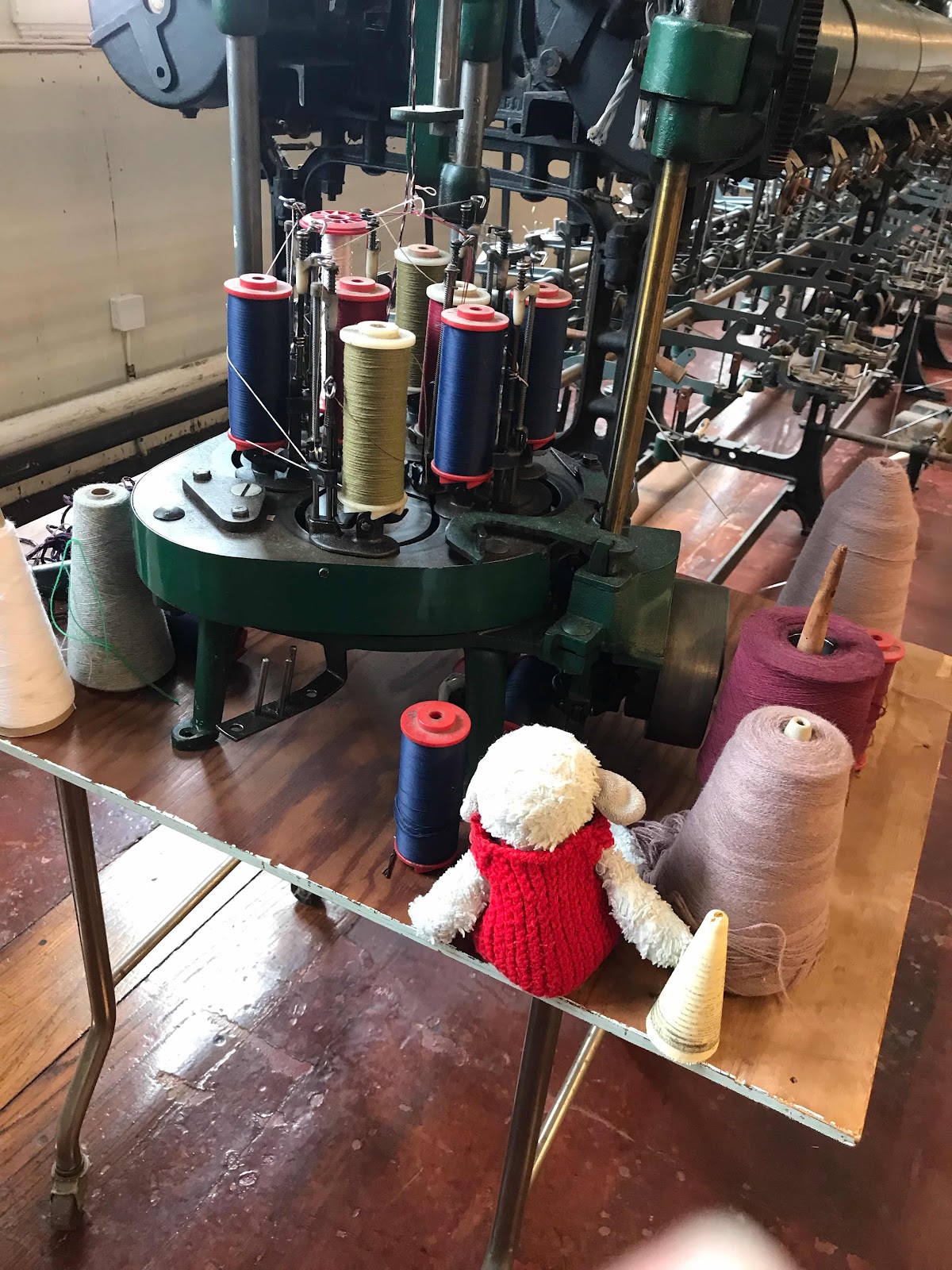
Then she spent several hours turning her wool into yarn for knitting. She got quite upset when she discovered that the women in the factory were only paid 50% of the men’s wages.

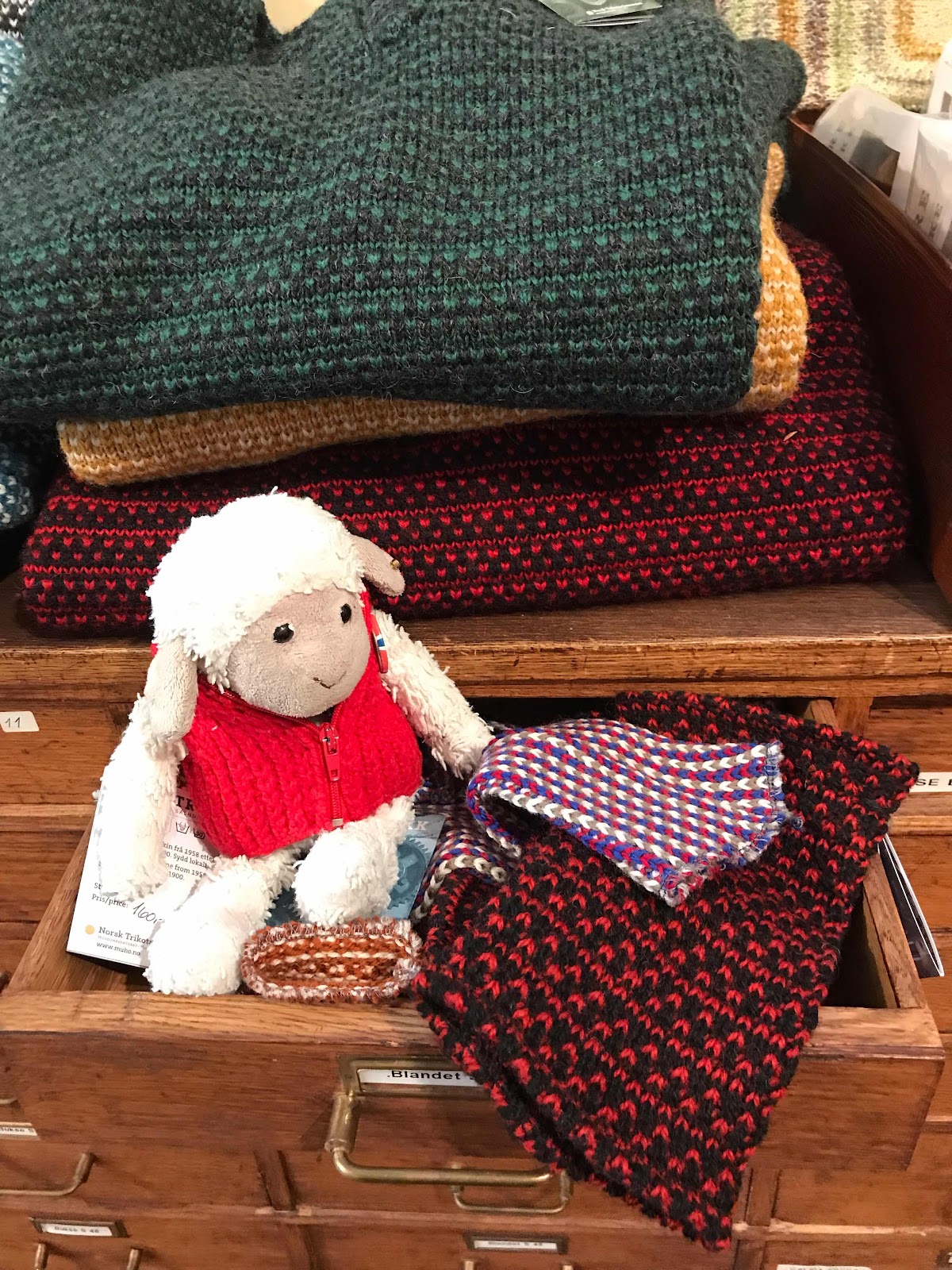
Then she looked at pattern books and finished garments before she chose which design she wanted to make.


Lucy left the factory wearing the Norsk Strikkavarer that she had made, and I was the proud owner of a sock.

As it was a dry day I decided to go for a boat trip along one of the fjords.

Eating fish and chips at the harbour

It was Pride week while I was in Bergen so there was a good visible LGBT presence on the streets and in cafes while I was there. Unfortunately I had to leave before the Saturday Parade, but there were events in ‘Pride Park’ every night, and entry was free.
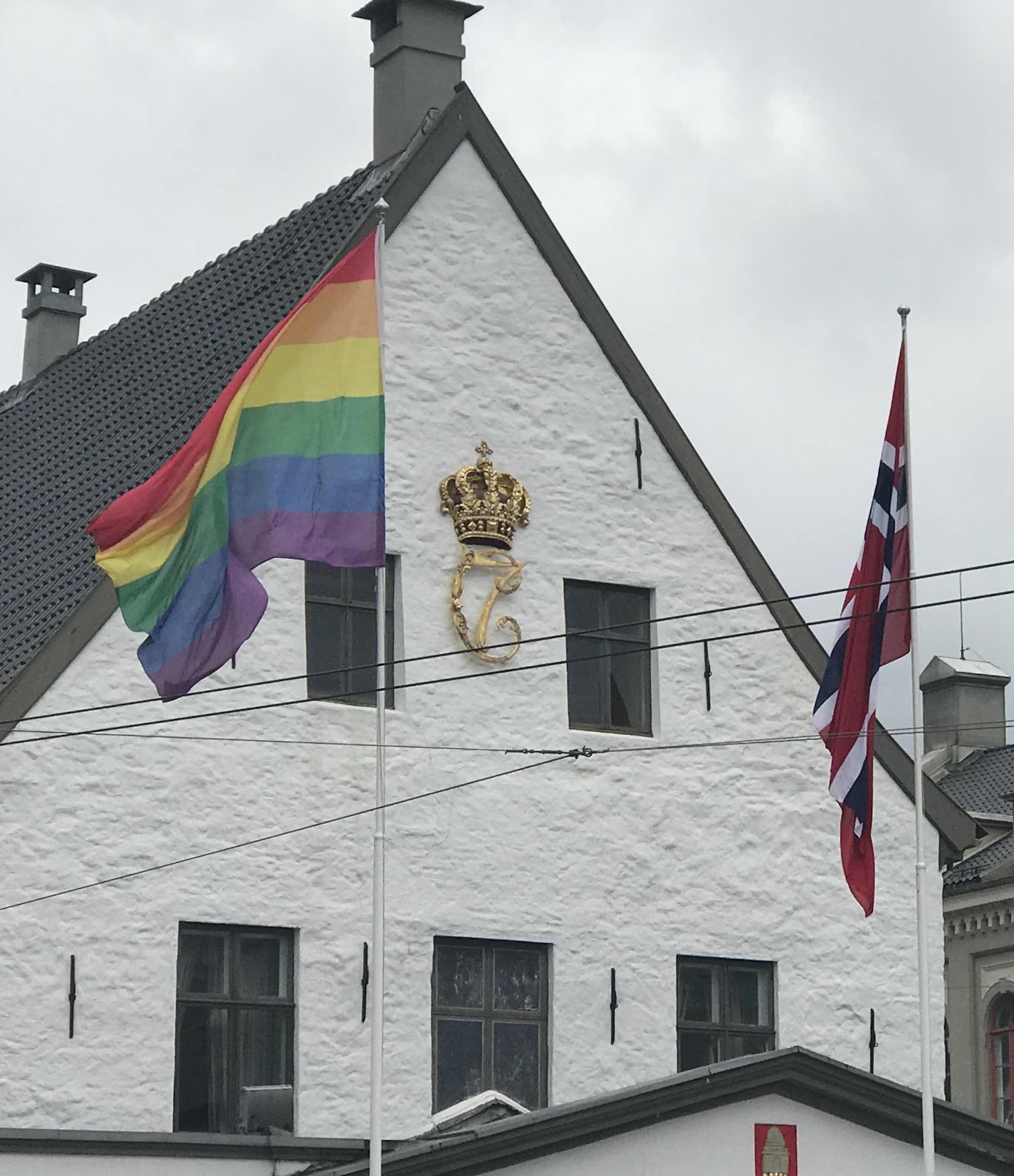

A day travelling on the Bergensbanen (Bergen Railway)

The train journey across Norway from Bergen to Oslo takes 10 hours and is considered to be one of the world’s best train journeys. It is also Northern Europe’s highest railway and goes through 180 tunnels. Luckily I booked it before I left Birmingham as it was full. As I get half-price travel I upgraded to ‘Comfy Class’ and it was well worth the few extra NOK. Lucy had a window seat, plenty of leg room and space to walk about. There was also a free drinks machine and snacks in our carriage.

It is a single track line and the train climbed for well over two hours from sea level in Bergen to a height of 1222 metres to Finse Station. Then we crossed the snow and ice of Central Norway before dropping down to sea level again in Oslo.
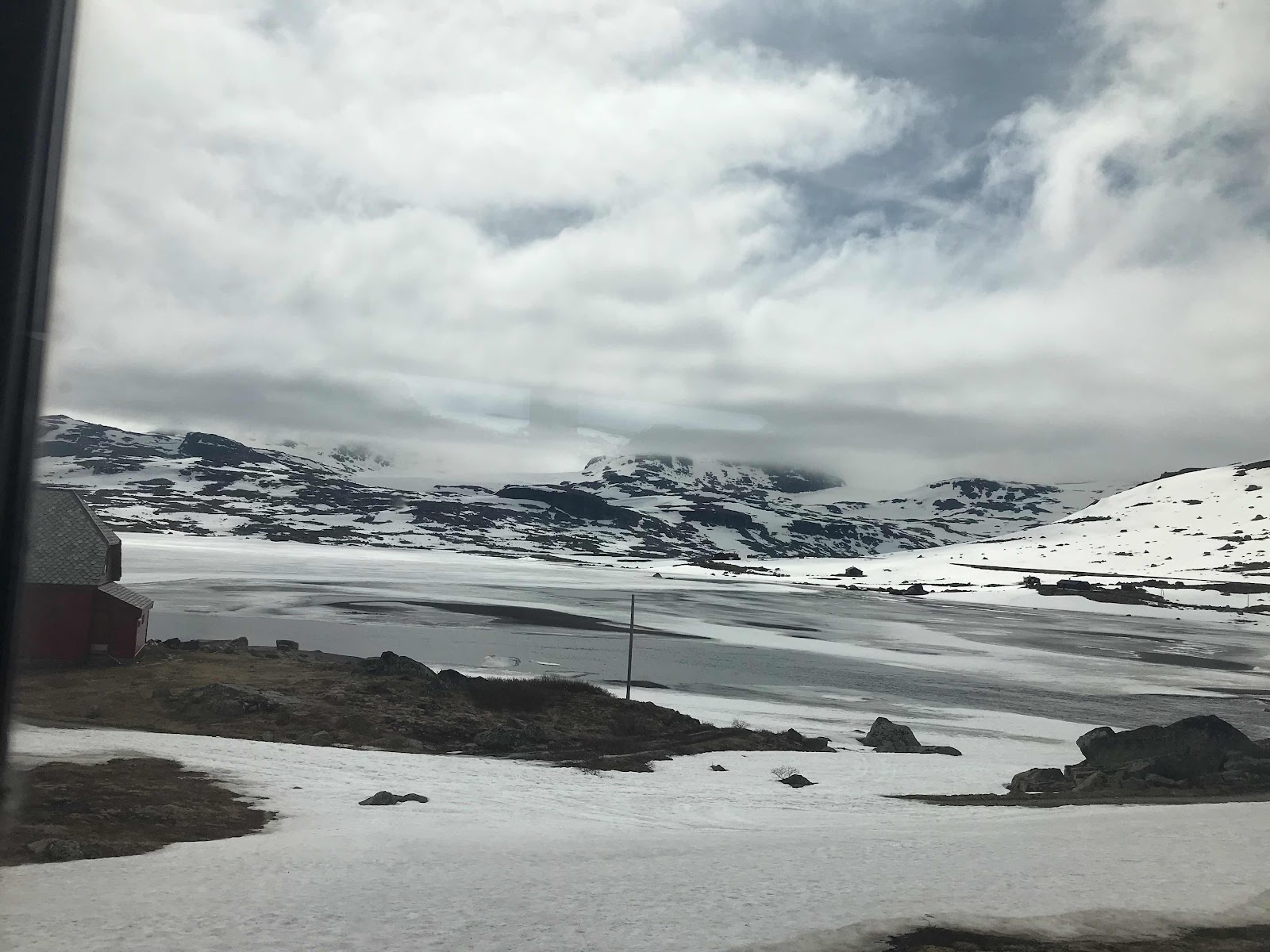

I got off at this stop to take a photo when the doors started to close. Panic stations as Lucy and my luggage were on the train. Luckily I just managed to squeeze through them before they fully closed. But I am sure Lucy would have pulled the emergency cord and got me back on board.

St Olavs Plass - Near my room
It was quite a long walk to my room from the station and I got lost a few times. Especially as some roads were closed because they are installing a new tram system. But I soon learnt that I had to make for St Olavs Plass and my room was on the next corner.

Norwegian flag flying on the Stortinget
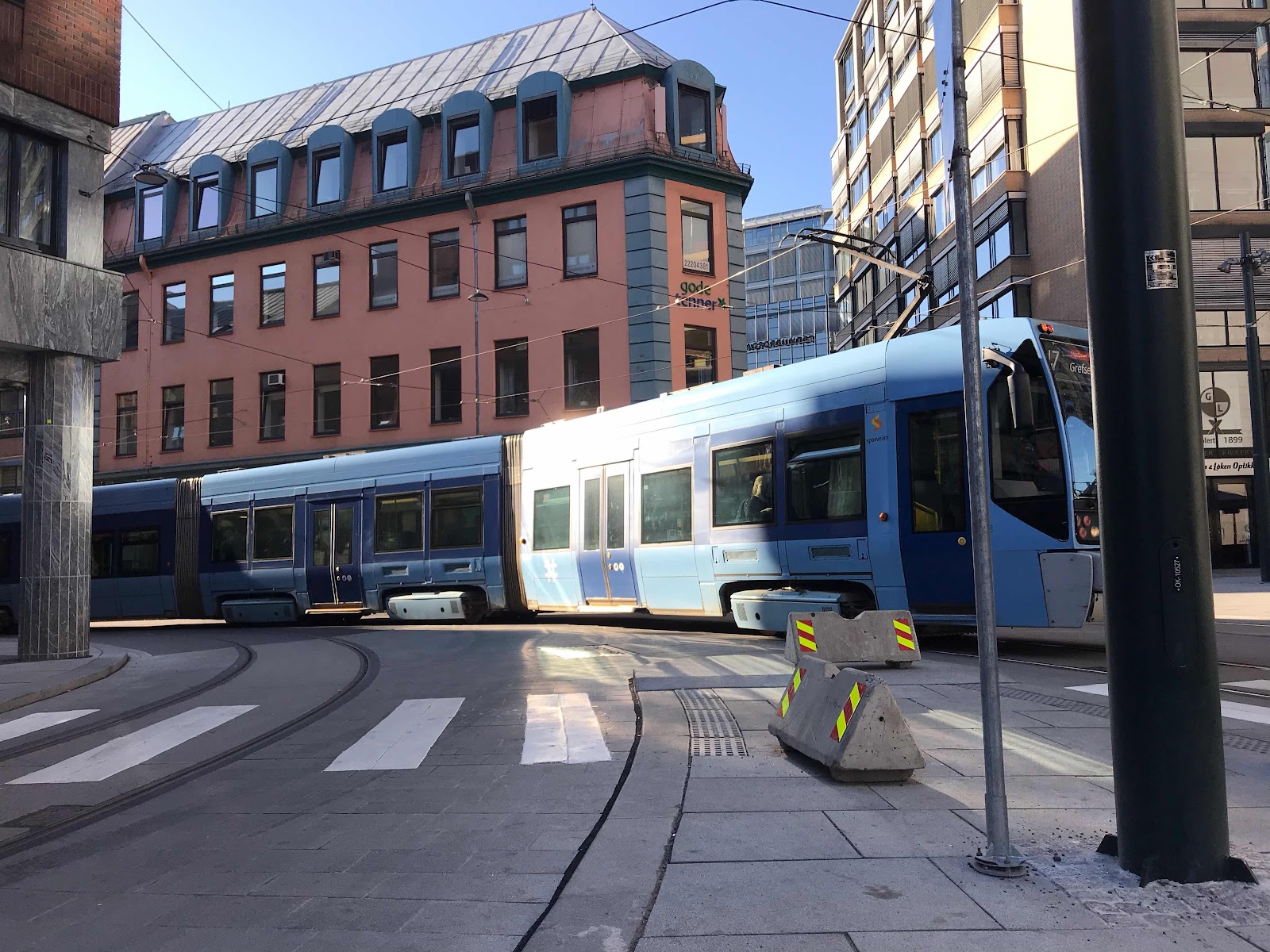
The tram I caught back to my room. I could walk to the centre but needed the trams to go further afield.
The first electric tram line in Oslo opened in 1894, and although they have been updated over the years the current system is very old and is being upgraded to a new one scheduled to open in 2024. At the moment they are putting in the new power system so a lot of roads are closed and tram stops closed. It was like being back in Birmingham.
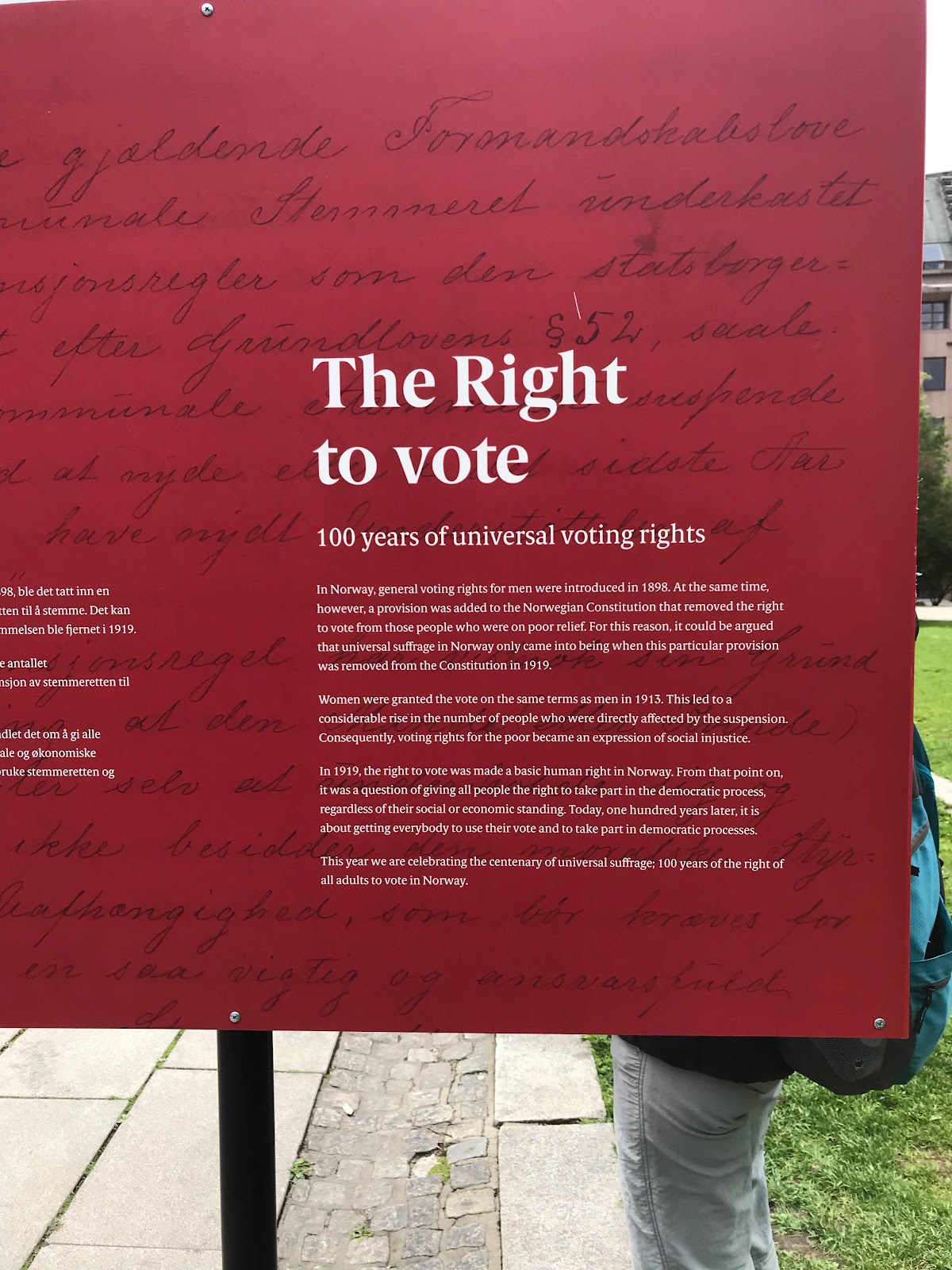
There was a really good exhibition outside the StortingetBuildings (Norwegian Parliament) about Universal Suffrage and 100 years of the Right to Vote. The first victory for women’s Suffrage was in 1901 when women over the age of 25 and of a certain means were granted the vote in local elections This was extended to Parliamentary elections in 1907. Several voting reforms were introduced during the next decade and full Suffrage, regardless of status for both men and women came about in 1919. 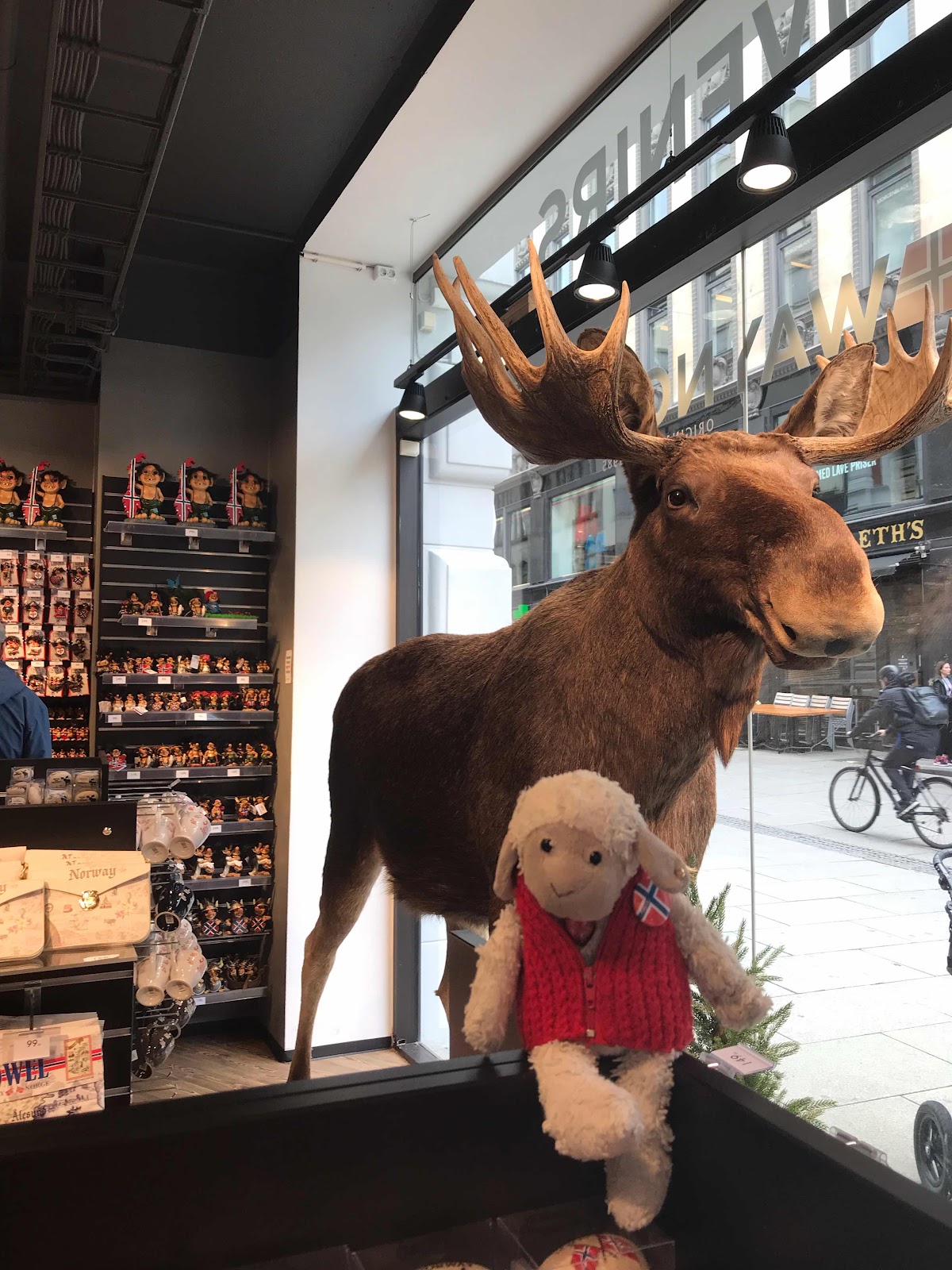
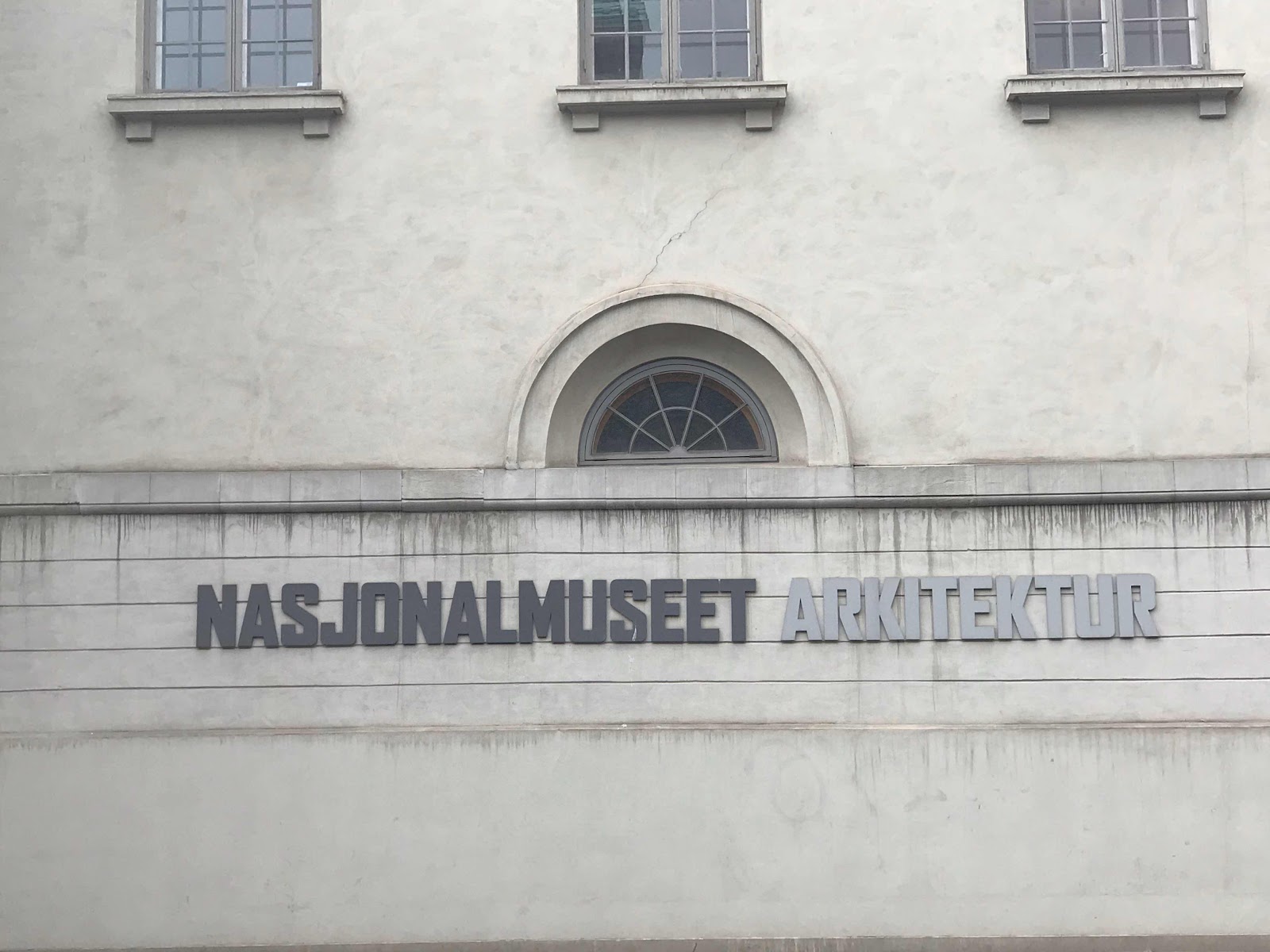

Le Corbusier’s Modulor
Le Courbusier’s design of human proportions greatly influenced the residential architecture of Oslo in the 1950s.

One of the books I read about Norwegian architecture

The Oslo Opera House is considered to be one of the most iconic modern buildings in Scandinavia

Taken from inside the ‘iceberg’ - Helsinki Opera House
I spent a lot of time sitting at the harbour near the Opera House watching the boats coming in and out. It opened in 2008 and resembles a glacier floating in the Oslofjord.

M314 ALTA a former minesweeper that is now a museum ship not far from the Opera House.


The Rådhuset (City Hall) is the political and administrative centre of Oslo. I took loads of photos of this building, as I like the style of architecture, but won’t bore you with them. Work began on the building in 1931 but stopped during WWII, so it wasn’t completed until 1950. Unfortunately renovations are ongoing so it was closed to the public, but I saw photographs of the interior and it is full of paintings and sculptures by Norwegian artists.

My last visit in Oslo was to the Nobel Peace Centre.

Nadia Murad, is a survivor of sexual war crimes and has spoken out about her ordeal. She is now devoting her life to raising awareness about the subject.

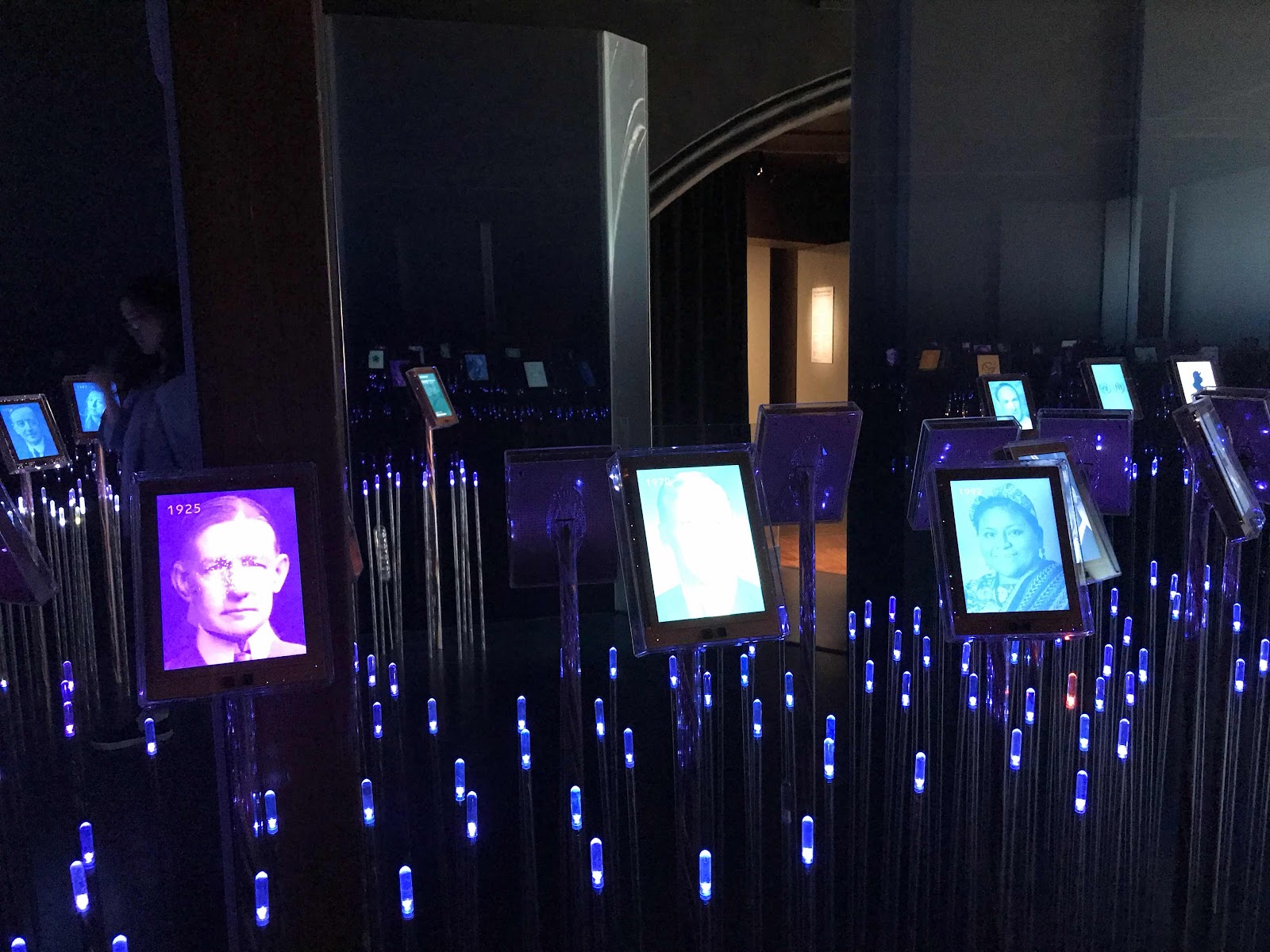

Bertha Von Suttner was the first woman to be awarded the prize in 1905 for her work with the Peace Movement.

While I was looking at the exhibitions Lucy was off taking part in a Peace Demonstration.
Flying to Norway
Sunday 2nd June 2019
For some strange reason I occasionally set-off an alarm when I go through security at the airport and they swab my hands for traces of explosives. On the way to Greenland the swabs were negative and I continued through to the departure lounge with no problem. But this time at Reykjavik Keflavik International airport it was a different story. They tested me a couple of times and they were still positive. So they called a senior security woman, who luckily was really nice. I had to stand on a box in bare feet with my arms out wearing just my t-shirt and trousers while she tested me again. Hands, neck, waist, ankles - still showed positive. So she took me and my luggage away and questioned me. Where I live? What I do? Where I’ve been? etc. Then she searched my luggage and tested everything. Finally she said she didn’t know what was causing it but let me continue and said that she didn’t believe for one minute that I had handled explosives. I am glad I’d got my boarding pass on my phone as I had checked-in online before I got to the airport so I still had plenty of time to get to the boarding gate. I blame Lucy who was cowering in my pocket. And she does live in Sparkhill. But joking aside, it makes you realise how easily you can be detained and I hope I never get stopped if I am anywhere near a terrorist attack.
Finally we were on our way and flew out of Iceland on an Icelandair flight to Bergen.
Arriving in Bergen
Some of the old wooden houses near the harbour dating back to the days of the Hanseatic League
Bergen, on the West Coast of Norway, is surrounded by seven hills and seven fjords and is known as the gateway to the Norwegian fjords, and many people start their fjord cruises from the harbour. In the early Middle Ages it was an important Hanseatic League trading port and was the capital of Norway.
Many of the houses are built on the hillsides rising up from the fjords. One of the books Lucy read said that Bergen is known for its ‘fickle weather’. Not quite sure what they mean by that, but while I was there it was mainly grey and damp, and there was an umbrella in my hotel room. Although the sun did break through for a while in the evenings.
Planning our stay in Bergen
When we arrived at the hotel I was shattered as the airport experience had made it a fairly traumatic day. So I got something to eat and had an early night. But Lucy, now wearing her Norwegian badge, sat up studying the maps and guide books and planned an itinerary.
Exploring Bergen
Monday 3rd June 2019
Wow! Breakfast was amazing. They said they offered over 100 items and there was everything you could possibly imagine for breakfast. I am here for five nights, so will sample something different each morning.
I started my first day in Bergen by wandering around to get a ‘feel’ of the City. I went to the Visitor Centre to pick up some brochures, walked around the harbour and looked at Bryggen, the old town.
Bryggen, with its colourful wooden houses is now a popular tourist area with gift shops and cafes.
I also bought a Bergen travel card from the railway station. As I am over 67 I can get a half price city travel card to use on all forms of public transport. In most cities you can buy a city tourist card to use on their transport systems and entry to museums and other attractions. But I find it cheaper to buy an older person’s travel card and pay to visit museums. Sometimes the museums are free for pensioners and I am not really interested in many of the attractions available with the card as they are geared towards children.
Then I went to look at the Edvard Munch exhibition at Kode 3, one of the four Kode art galleries in Bergen. The gallery owns one of the best Munch collections in the world and is well worth a visit because it exhibits paintings from all stages of his work.
Some of Munch’s paintings in Kode 3, although I had to take a photo of the poster of ‘The Scream’ as it is currently on display at the Munch Exhibition at the National Gallery in London. It is usually displayed at the Munch Museum, Oslo
That night I chatted to a Swedish Professor of Climatology in Bergen. We had a very interesting conversation, or maybe more of a debate, because his views on many things are diametrically opposed to mine. He was very well informed about British way of life, politics and Brexit, but I didn’t really agree with most of his statements. It was an ‘interesting’ evening. He also said that exams are in progress at his University and they have to be set in three languages: Nynorsk (New Norsk) Bokmål (Dano-Norwegian) and English. So Lucy rushed off to find a teacher to teach her how to write Bokmål.
.
Bokmål is a modified form of Danish with Norwegian pronunciation she found it quite easy to learn.
As I am interested in the development of languages I researched it more and found out that the Norwegian language is a North Germanic language that developed from Old Norsk. But during the Union between Denmark and Norway, 1536 - 1814, a koiné (common language) emerged, and Bokmål developed from this as the written language. Today Bokmål (Dansk-Norsk) is the written language used by most people, but written Nynorsk has equal status and both are taught in schools. The spoken language is based on Nynorsk but there are many different dialects and the regional variations are huge.
I don’t think even Lucy will be able to learn or understand them. But not much defeats her.
Lepramuseet and Fløibanen
Tuesday 4th June 2019
I decided that while I was in Bergen I would visit some specialist museums rather than just the large National ones to learn about lesser known aspects of the Social History of Norway. So I started my day at St Jørgens Hospital, Lepramuseet (the leprosy hospital museum).
Inside the old leprosy hospital which is now a museum.
Apparently leprosy was common in Norway especially amongst the farming communities and anyone suspected of having it was taken from their home and sent to the hospital, where they stayed for the rest of their lives. It is thought that some of the patients may have had other skin conditions, such as those caused by syphilis or skin cancers. And some may just have had very bad eczema or psoriasis. But they were treated the same and isolated for life.
Two patients lived in a small room, often for several decades.
A lot of research into the disease was carried out at the hospital, some of which was controversial.
Armauer Hansen devoted his life to the study of leprosy and helped to advance the understanding and treatment of the disease.
Lucy sat in one of the rooms and thought about the life of this woman who was admitted at the age of 10.
The last patient was admitted in 1896 but the hospital didn’t close until the last two woman died in 1946. They had both been incarcerated there for over 50 years and died within weeks of each other.
Fløibanen
The rain stopped and the sun tried to come out, so I went up the Fløibanen, (funicular railway). At the top you get wonderful views of the city and the fjords.
Lucy also met a troll and some mountain goats while she was there.
Lucy made herself a traditional Norwegian jumper
Wednesday 5th June 2019
On one of the buses going to Salhus
It was still drizzling so I decided to use my travel card and go out of Bergen for the day and see some Norwegian countryside. Lucy wanted a Norwegian jumper and had read about an old knitting factory. So she studied the timetables, and took me on four different buses to visit the Norsk Trikotasjemuseum at Salhus. This was one of the first knitting factories to open in Norway and produced knitwear from 1859 to 1989. The machines are still operational and you have a guided tour of the factory to see them working. There were only two other people on my tour, so you could ask lots of questions. The young guide did it in Norwegian and in English for me. She said it was the first one she had ever done in English and was clutching her script nervously. She thanked me at the end for helping to make it easy for her. Some of the machines are fully operational and they use them to make items to sell in the museum shop.
While I was looking around Lucy had a very productive day as they taught her how to make a jumper.
She had help choosing the sheep’s wool she was going to use to make it.
Then she spent several hours turning her wool into yarn for knitting. She got quite upset when she discovered that the women in the factory were only paid 50% of the men’s wages.
Then she looked at pattern books and finished garments before she chose which design she wanted to make.
While she was doing this, I used a machine that was made in Leicester to make a sock.
Lucy left the factory wearing the Norsk Strikkavarer that she had made, and I was the proud owner of a sock.
A day in Bergen with no rain
Thursday 6th June 2019
As it was a dry day I decided to go for a boat trip along one of the fjords.
Eating fish and chips at the harbour
I couldn’t resist taking that photo, I took it from a distance and then cropped it several times. When I got off the boat I had supper in a restaurant in the fish market before spending my last evening in Bergen at Pride Park.
Bergen Pride
It was Pride week while I was in Bergen so there was a good visible LGBT presence on the streets and in cafes while I was there. Unfortunately I had to leave before the Saturday Parade, but there were events in ‘Pride Park’ every night, and entry was free.
A day travelling on the Bergensbanen (Bergen Railway)
Friday 7th June 2019
The train journey across Norway from Bergen to Oslo takes 10 hours and is considered to be one of the world’s best train journeys. It is also Northern Europe’s highest railway and goes through 180 tunnels. Luckily I booked it before I left Birmingham as it was full. As I get half-price travel I upgraded to ‘Comfy Class’ and it was well worth the few extra NOK. Lucy had a window seat, plenty of leg room and space to walk about. There was also a free drinks machine and snacks in our carriage.
It is a single track line and the train climbed for well over two hours from sea level in Bergen to a height of 1222 metres to Finse Station. Then we crossed the snow and ice of Central Norway before dropping down to sea level again in Oslo.
I got off at this stop to take a photo when the doors started to close. Panic stations as Lucy and my luggage were on the train. Luckily I just managed to squeeze through them before they fully closed. But I am sure Lucy would have pulled the emergency cord and got me back on board.
Whitsun Holiday Weekend in Oslo
Friday 8th - Monday 11th June
I have arranged this section slightly differently and, instead of a day by day account, I have taken a thematic approach as I visited some places more than once on different days.
St Olavs Plass - Near my room
It was quite a long walk to my room from the station and I got lost a few times. Especially as some roads were closed because they are installing a new tram system. But I soon learnt that I had to make for St Olavs Plass and my room was on the next corner.
Norwegian flag flying on the Stortinget
As usual I went to the Visitor Centre first to get information and plan my weekend in Oslo. It was the Whitsun holiday weekend, so some things were shut, but conversely some museums and restaurants that would normally be closed on Monday were open. So I got a list of what was open and planned accordingly.
Rebuilding and Regeneration
I was unable to visit the major museums and galleries as they are closed this year. A new Museum Complex is opening in 2020 and the exiting exhibits are in the process of being moved. But the weather was so good it didn’t spoil anything.
The tram I caught back to my room. I could walk to the centre but needed the trams to go further afield.
The first electric tram line in Oslo opened in 1894, and although they have been updated over the years the current system is very old and is being upgraded to a new one scheduled to open in 2024. At the moment they are putting in the new power system so a lot of roads are closed and tram stops closed. It was like being back in Birmingham.
Universal Suffrage
There was a really good exhibition outside the StortingetBuildings (Norwegian Parliament) about Universal Suffrage and 100 years of the Right to Vote. The first victory for women’s Suffrage was in 1901 when women over the age of 25 and of a certain means were granted the vote in local elections This was extended to Parliamentary elections in 1907. Several voting reforms were introduced during the next decade and full Suffrage, regardless of status for both men and women came about in 1919.
I had no idea where Lucy was, but I eventually found her with an elk.
Nasjonalmuseet Arkitektur
Thhe National Museum of architecture also houses the archives for the city and I spent a very interesting afternoon looking at architectural plans and models. There were also two special exhibitions, one about the development of residential housing in Oslo and the other showed how landscape architects have influenced the built environment
Le Corbusier’s Modulor
Le Courbusier’s design of human proportions greatly influenced the residential architecture of Oslo in the 1950s.
One of the books I read about Norwegian architecture
The Oslo Opera House and Harbour
The Oslo Opera House is considered to be one of the most iconic modern buildings in Scandinavia
Taken from inside the ‘iceberg’ - Helsinki Opera House
I spent a lot of time sitting at the harbour near the Opera House watching the boats coming in and out. It opened in 2008 and resembles a glacier floating in the Oslofjord.
M314 ALTA a former minesweeper that is now a museum ship not far from the Opera House.
Rådhuset og Nobels Fredssenter
The Rådhuset (City Hall) is the political and administrative centre of Oslo. I took loads of photos of this building, as I like the style of architecture, but won’t bore you with them. Work began on the building in 1931 but stopped during WWII, so it wasn’t completed until 1950. Unfortunately renovations are ongoing so it was closed to the public, but I saw photographs of the interior and it is full of paintings and sculptures by Norwegian artists.
My last visit in Oslo was to the Nobel Peace Centre.
There were two main parts to this. The first was a very thought provoking exhibition, ‘The Body as a Battlefield’, about the history of sexual violence used as a weapon of war. Nadia Murad and Dr Denis Mukwege, campaigners for the perpetrators of sexual violence to be held to account, were both awarded the Nobel Peace Prize in 2018.
Nadia Murad, is a survivor of sexual war crimes and has spoken out about her ordeal. She is now devoting her life to raising awareness about the subject.
Dr Denis Mukwege has devoted much of his life helping survivors of sexual violence in the Democratic Republic of Congo.
The second room was a roll of honour with a touch screen giving details about every recipient of the Peace Prize.
Bertha Von Suttner was the first woman to be awarded the prize in 1905 for her work with the Peace Movement.
While I was looking at the exhibitions Lucy was off taking part in a Peace Demonstration.
So our time in Norway drew to a close and the next stop is Sweden.
Comments
Post a Comment